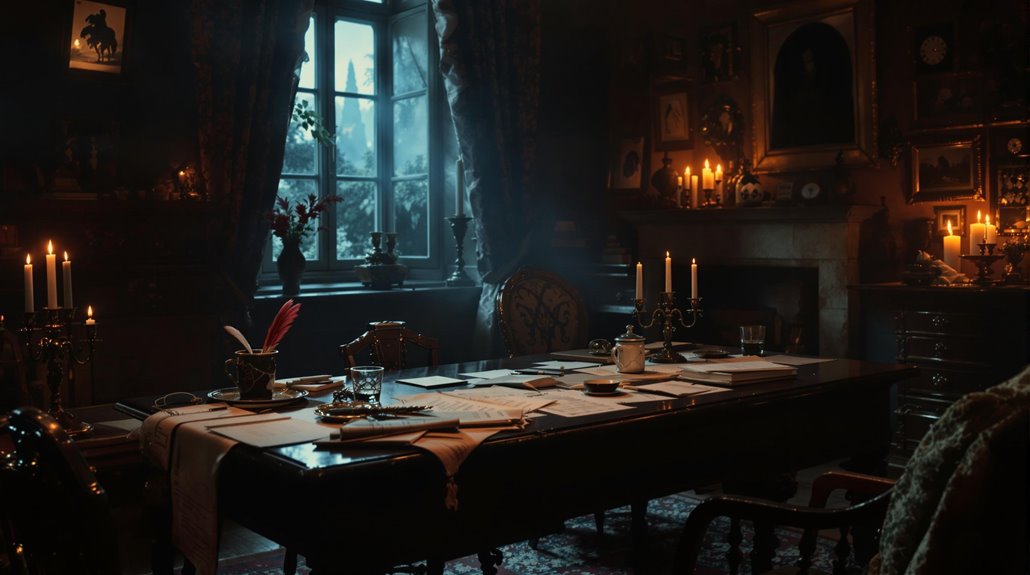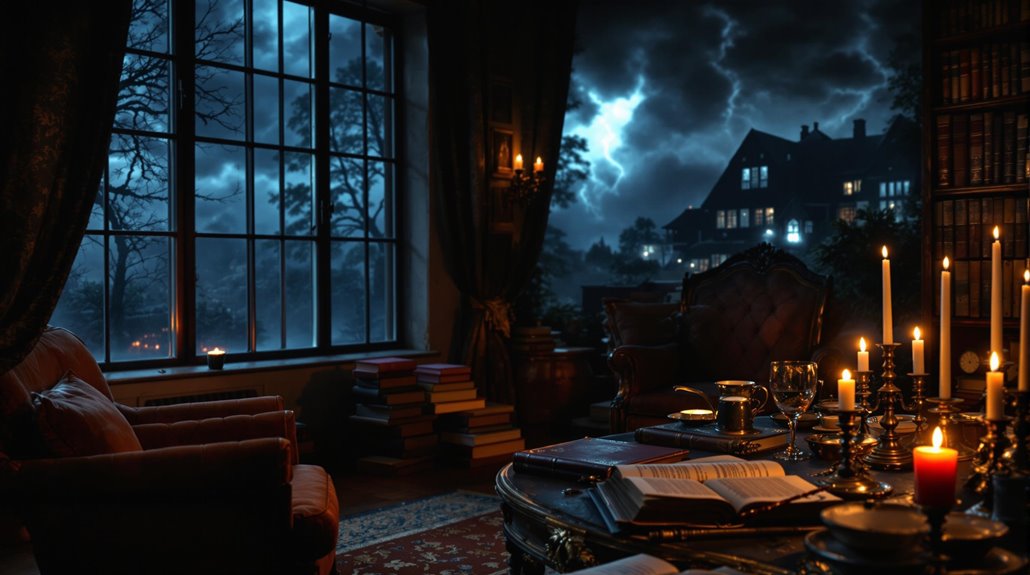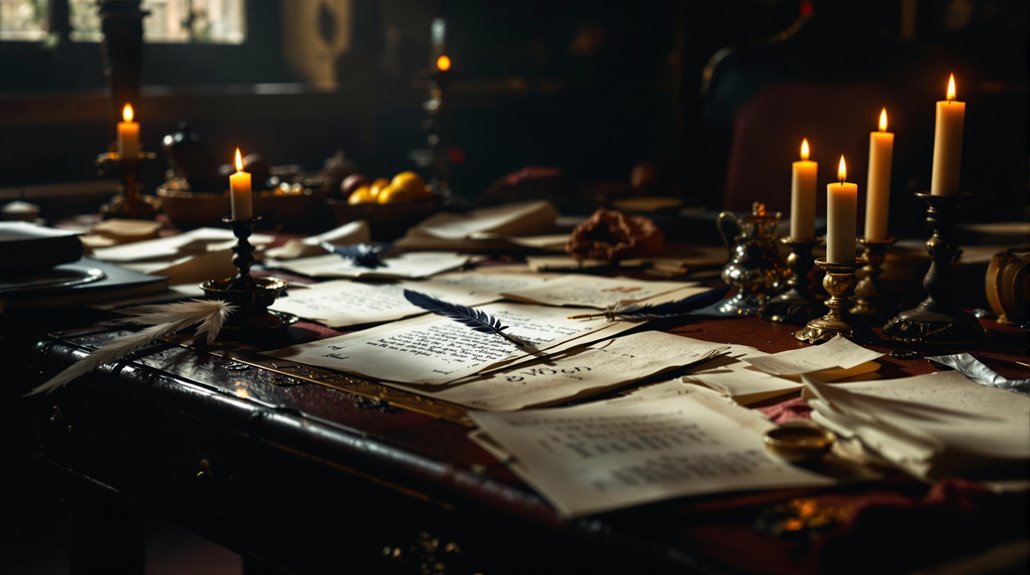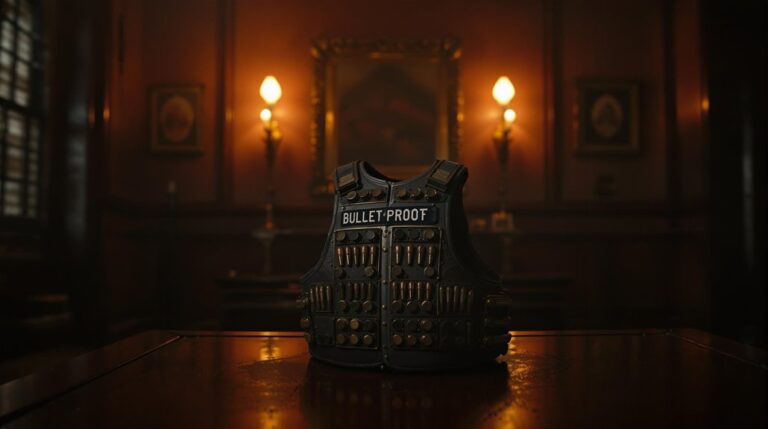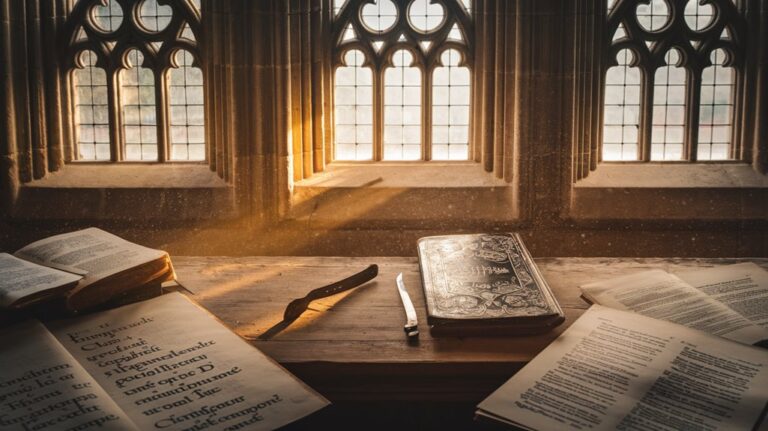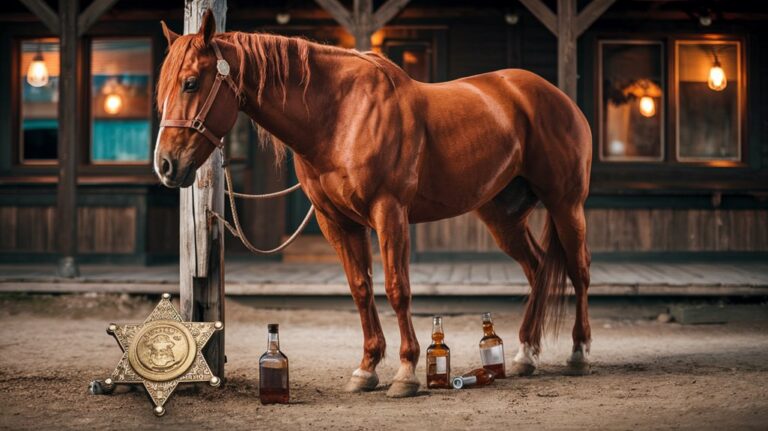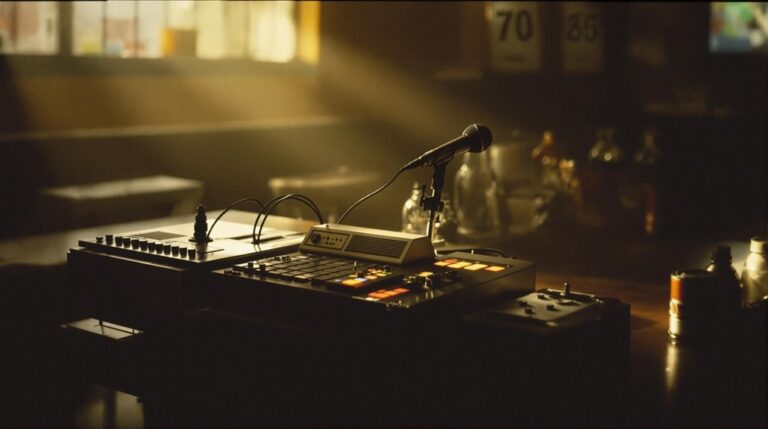Lord Byron’s Challenge Led to Shelley Writing Frankenstein
You've probably heard of Frankenstein's monster, but you might not know that this iconic creature emerged from a friendly writing challenge. When Lord Byron suggested his guests write ghost stories during a rainy summer evening in 1816, he couldn't have known he was setting literary history in motion. At Villa Diodati near Lake Geneva, Mary Shelley found herself among friends who'd spark her imagination and lead her toward creating one of literature's most enduring monsters.
The Summer Gathering at Villa Diodati
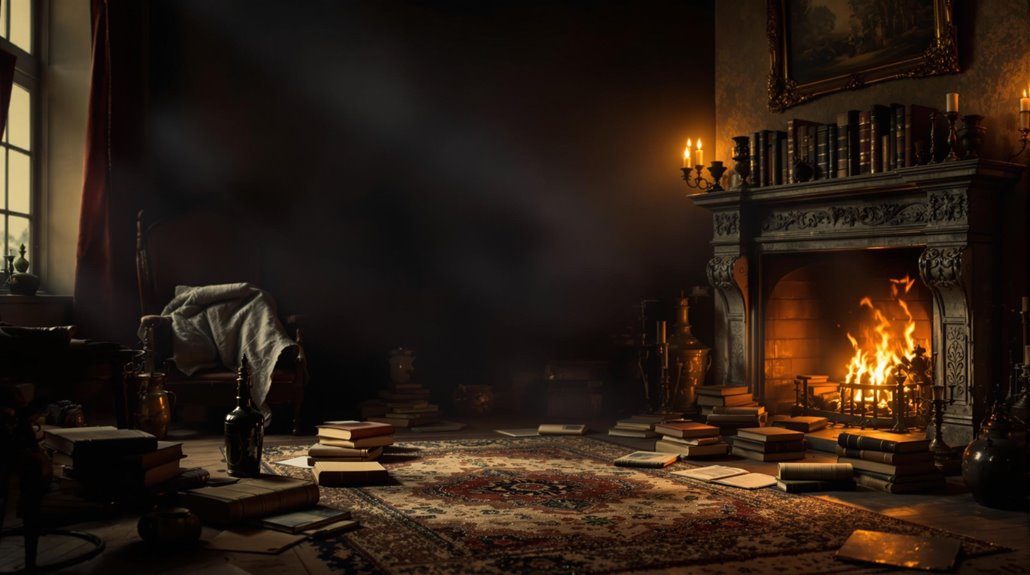
In the stormy summer of 1816, Villa Diodati became the unlikely birthplace of one of literature's most enduring monsters.
You'll find the Villa atmosphere was uniquely suited for creativity, as Mount Tambora's eruption had cast a dark pall over Europe, forcing the distinguished guests to remain indoors.
Lord Byron, having rented the Swiss mansion to escape English scandal, hosted an extraordinary gathering of literary friendships. Percy Shelley and Mary Godwin stayed nearby at Maison Chapuis, while Byron's physician John Polidori and Mary's stepsister Claire Clairmont completed the circle at Villa Diodati.
They'd spend their evenings by candlelight, as rain lashed the windows and thunder rolled across Lake Geneva. The weather was so severe that snow fell in June across parts of North America. The group entertained themselves by reading from Fantasmagoriana stories, which sparked their ghost story competition.
Each brought their own troubles and creative passions, making the mansion a pressure cooker of artistic inspiration.
A Ghost Story Competition Takes Shape
During one particularly dreary evening at Villa Diodati, Lord Byron sparked what would become a legendary moment in literary history.
After reading German horror tales translated into French, he challenged his companions to create their own ghost stories, launching an impromptu literary competition that would change the horror genre forever.
You'd find each participant responding differently to Byron's challenge.
While Byron himself quickly drafted a vampire tale fragment and Shelley drew from his childhood experiences, Polidori imagined a story about a skull-headed lady.
Mary Godwin (later Shelley) initially struggled to find inspiration.
The weather was exceptionally gloomy due to the effects of Mount Tambora's eruption.
The rules were simple: create original, frightening tales to share with the group.
Two centuries later, writers are invited to participate in a ghost story contest commemorating this historic literary gathering.
Though there wasn't a formal winner, the competition produced two masterpieces: Shelley's "Frankenstein" and Polidori's "The Vampyre."
Mary Shelley's Breakthrough Moment
While Mary Shelley initially struggled to conceive a story for Byron's challenge, a vivid "waking dream" would ultimately spark one of literature's most enduring masterpieces.
The inspiration sources that converged during her time at Lake Geneva created the perfect creative environment – from the gloomy weather to late-night ghost stories and philosophical discussions about the nature of life itself. The group's storytelling challenge would become the birth of science fiction. The summer of 1816 was particularly dreary, as it became known as the year without summer, forcing the writers to stay indoors.
During her creative struggles, Shelley's breakthrough came in the form of a striking vision: a pale student kneeling beside his hideous creation.
This powerful image, combined with her knowledge of contemporary scientific experiments with electricity and galvanism, gave birth to her groundbreaking tale.
Her personal experiences, including the loss of her first child and her deep interest in the scientific advancements of her era, further shaped what would become "Frankenstein."
From Dream to Literary Masterpiece
From her powerful waking dream, Mary Shelley transformed a fleeting image into a complete literary work through months of dedicated writing and revision.
From a journal entry on December 31, 1817, she quietly noted the completion of her masterpiece before its publication on January 1, 1818.
You can trace how her dream inspiration evolved from a short story into a full-length novel, shaped by both scientific curiosity and Gothic literary traditions.
At just 19 years old, Shelley wove together influences from Humphry Davy's chemistry lectures, German ghost stories, and contemporary debates on scientific ethics.
She didn't work alone – her husband Percy provided editorial guidance as she refined multiple drafts.
Percy Shelley's involvement was substantial, contributing five thousand words to the manuscript.
The addition of Robert Walton's character brought new depth to the narrative framework.
When published anonymously in 1818, the novel received mixed reviews, but its impact was undeniable.
Despite some moral objections, Frankenstein has remained continuously in print since its first publication.
Lord Byron's ghost story challenge at the Villa Diodati yielded far more than he could have imagined, sparking a literary revolution that would influence generations of writers and artists. Byron's influence extended far beyond that rainy summer evening, as Shelley's response to his challenge would reshape literature forever. The relentless thunderstorms kept the group confined indoors, creating the perfect environment for storytelling and creativity. During this memorable summer of 1816, Mary and Percy engaged in literary discussions alongside other prominent figures.
Her masterpiece merged Romantic ideals with groundbreaking scientific concepts, creating an entirely new genre that still captivates readers today.
- You'll find her work echoing through centuries of Gothic literature
- You'll see her monster's influence in countless debates about artificial life
- You'll discover her pioneering narrative techniques in modern storytelling
- You'll recognize her themes in today's discussions about ethics and technology
This simple writing contest transformed into a cultural phenomenon that continues to shape our understanding of science, creation, and human nature.
A Pivotal Moment in Literary History
The summer of 1816 marked an extraordinary turning point in literature that would reshape storytelling forever.
At Villa Diodati, you'd find a group of young writers whose gathering would change the course of fiction. When Lord Byron challenged his companions to write ghost stories, he unknowingly sparked a literary revolution that bridged Gothic influences with scientific exploration.
Mary Shelley's response to this challenge proved particularly significant. At just 18 years old, inspired by discussions of galvanism and a haunting nightmare, she created "Frankenstein" – a work that transcended traditional horror. The year without summer created the perfect gloomy atmosphere for this gathering, as a volcanic eruption had caused unusually dark and stormy weather.
You can trace modern science fiction's roots to this pivotal moment, where a rainy evening's entertainment evolved into a groundbreaking novel that merged supernatural terror with scientific possibility.

